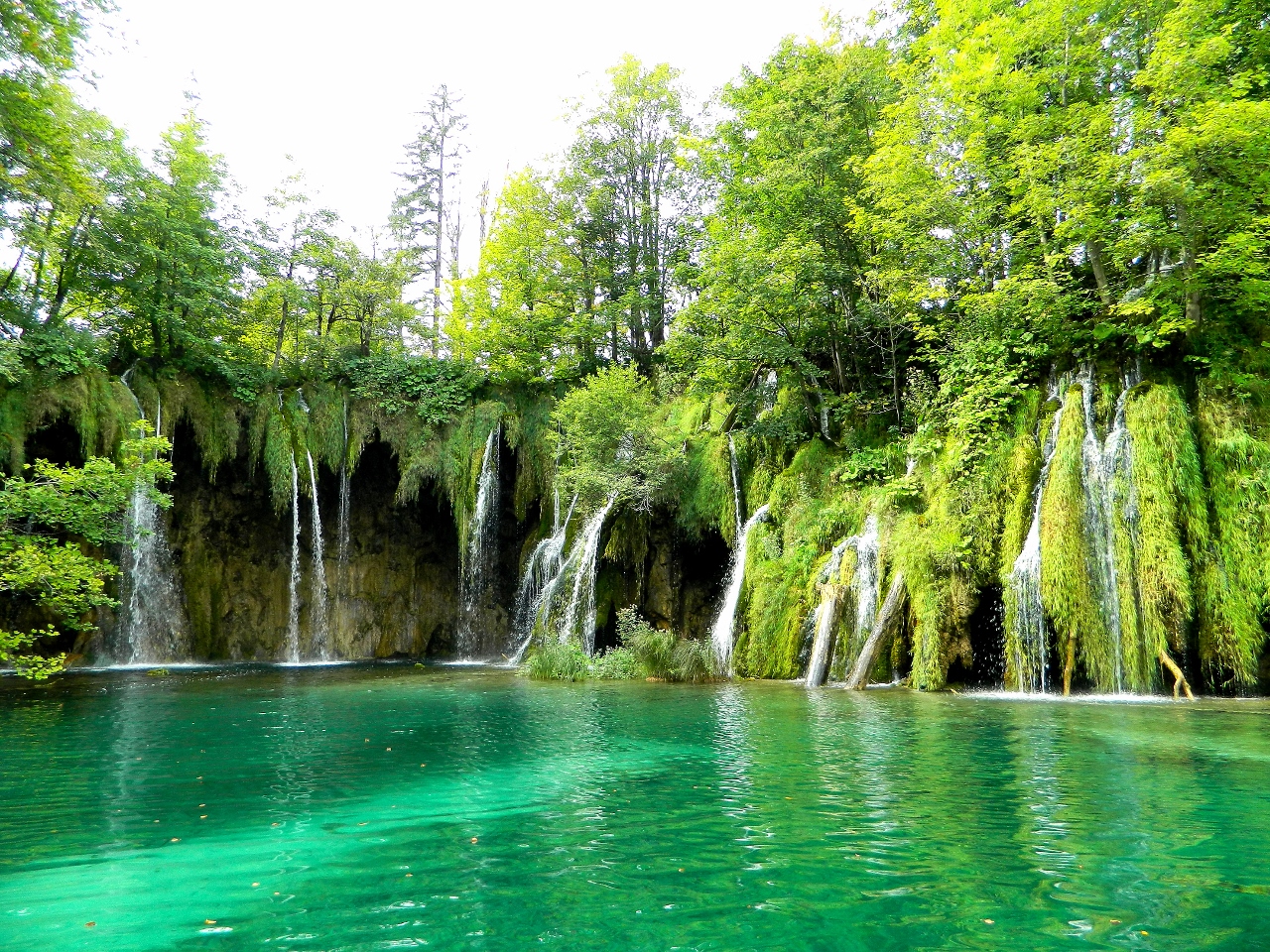Plitvice Lakes National Park is Croatia’s biggest natural attraction and comprises sixteen dazzling turquoise and green lakes fed by waterfalls set in steep forested gorges. It is enchanting and is home to myths and legends of folklore and romance as well as wolves, bears and wild boars in its wooded heights.

Narrow planked walkways wind alongside the lakes and up and through the gorges alongside the waterfalls. We had dressed for a day’s hiking so were in sturdy boots and walking gear, but were in the minority as most of the many visitors tottered about in flip flops and high heels.
The park is networked by ferries and shuttle buses and the majority of people used the transport to get between the main sights, and the many restaurants.
Our planned six hours’ hike was done in four, and really wasn’t at all taxing other than the need to dodge large charging herds of organised tour groups and the many posing ‘selfie’ takers, many with the now ubiquitous and frankly comical ‘sticks’ (cameras on the end of a plastic pole).
We spent considerable time waiting for the opportunity to take photos, just of the landscape, and being asked to take photos of others (the ones without the ‘sticks’). We spotted several haplessly-discarded cameras rusting gently away in the clear waters.

Veliki Slap, or ‘big waterfall’ is the main attraction and we made that our last destination. Standing under the 78 meter drop of icy green water was inspiring, and its spray was refreshing. We then assailed the steep climb up the side of the gorge on its opposite bank to look back at the falls.
The streams of people, of which we of course were part, busied along the paths to and from the drop and around the reed-lined lake at its base.
Having to wait an hour and a half for the shuttle back to the camp meant time to regroup on a sunny bench and people-watch. Large numbers of Americans and Japanese milled about waiting for coaches back to their cruisers docked at Split and Dubrovnik.
Australian backpackers joked over (several) beers and chain-smoking Slavic men and women noisily jostled each other, whilst Italians enacted their usual mini-dramas. It was clear that the park was taking a lot of money that day, just a regular Tuesday in September.
We felt regret for Serbia that it does not have a comparable natural attraction, or indeed coastline. The difference between the numbers of visitors drawn to Croatia, and their own countries of origin was starkly evident to us after just two days. We mused on Serbia’s likely future in comparison with Croatia’s well established and tourism-boosted economy, whilst chuckling at the antics going on around us.










